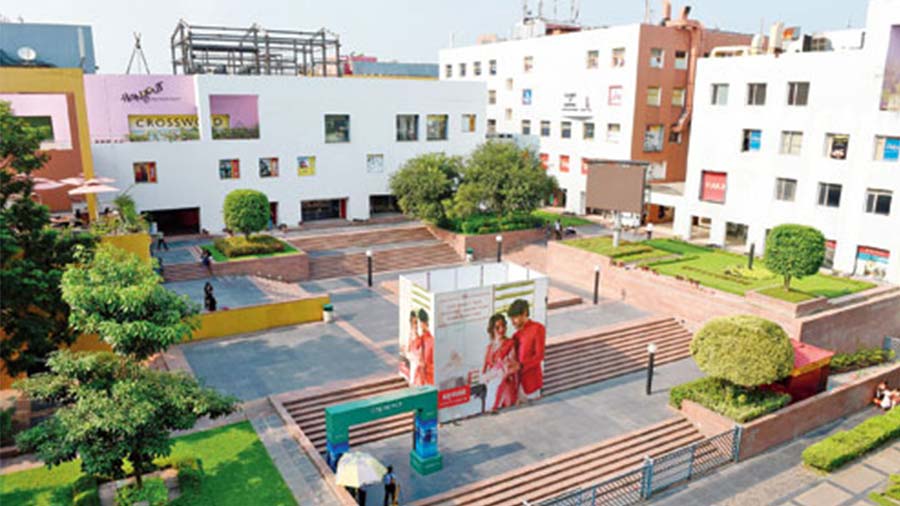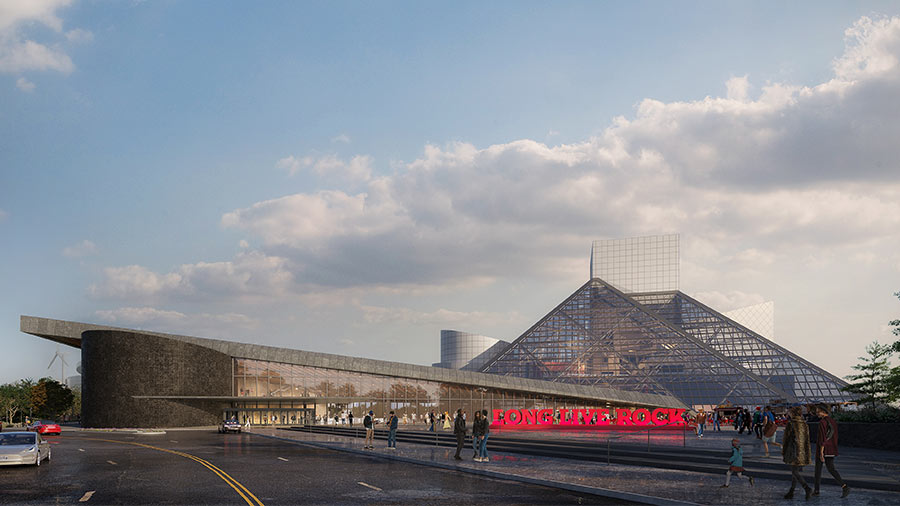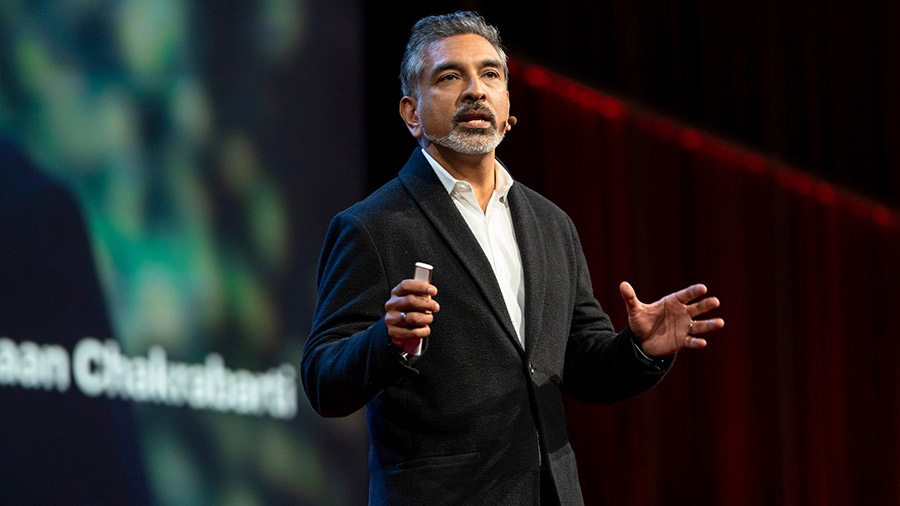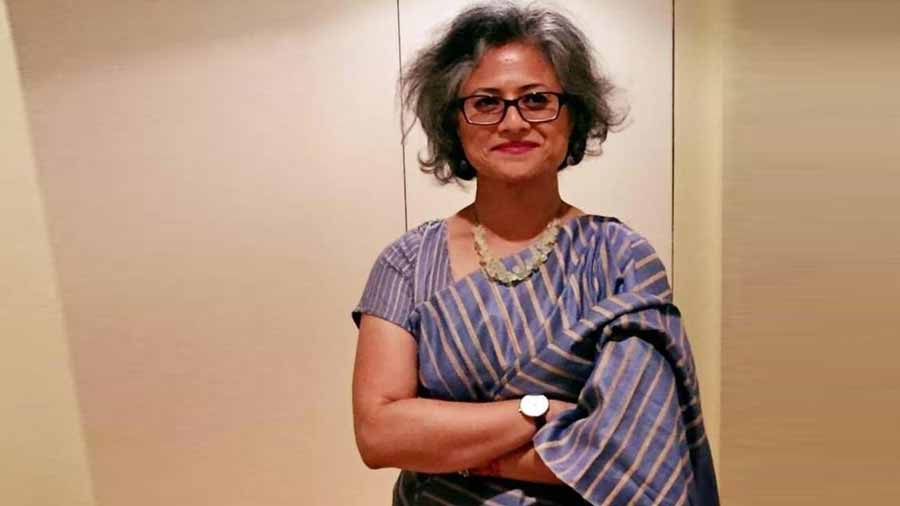How does a Bengali from Kolkata make his way into the overwhelmingly white world of architecture in the US? How does a brown man, with no family connections in his industry, not only survive but thrive in a field where the representation of his kind is “zero”?
“You fight and you make your own seat at the table, since nobody’s going to give it to you,” responds Vishaan Chakrabarti, 57, one of the most transformative and versatile architects in the US. Having moved from Kolkata to the US as a two-year-old with his parents and sister, with just $32 to spare as a family, Chakrabarti has grown to someone who has shaped the look and feel of today’s New York.
From the proposed recycling of the shell of Madison Square Garden into a new train hall for Pennsylvania Station in New York City to turning Domino Sugar Factory on Brooklyn’s waterfront into a viable commercial space to expanding the High Line to the restoration of the street grid at the World Trade Center site in lower Manhattan, Chakrabarti has brought precision, boldness and what he calls “a sense of pluralism” to landmark architectural projects in New York.
“Architecture remains a very white profession in the US. Even today, very few firms are owned by South Asians or African-Americans. While there’s little to no overt racism, there’s still a quiet discrimination at play, a feeling that it still remains a white man’s game. In such a scenario, you have to turn your obstacle into an advantage. For me, being Bengali is my superpower. It informs the way I see the world and how I can look beyond binaries to develop pluralistic, ambiguous and liminal tendencies,” explains Chakrabarti, who was elected to the American Institute of Architects’ College of Fellows in 2018 and named an Honorary Fellow of the Royal Architecture Institute of Canada (RAIC) a year later.
‘Salt Lake is one of the most successful examples of city development in the world’

Chakrabarti is impressed with how Salt Lake, especially its older parts, has retained the essence of Kolkata TT archives
“There’s no such thing as a blank slate,” asserts Chakrabarti, before adding that “every place, urban or rural, has its own climate, ecosystem and geology. It has its own context”. Chakrabarti’s personal context is shaped by shuffling between the US and India during his formative years. “During the ’70s and ’80s, I’d usually spend my summers in Kolkata, at a time when the city had no bottled water, let alone air-conditioning. I remember gallivanting my way through the city centre with a camera in hand. I also spent a lot of time at my family country house in Murshidabad, where there wouldn’t be any running water or electricity. The contrast with my time in the US influenced a lot of who I am and what I believe in,” says Chakrabarti, who keeps returning to Kolkata once every three or four years, with Peter Cat and the Indian Coffee House being his favourite haunts. He wishes, though, that more American tourists pay a trip to Kolkata on their India tours, something he hopes will happen once the city focuses more on promoting itself to foreign visitors by celebrating its history and heritage.
It was in Kolkata, more specifically in Salt Lake, that Chakrabarti first discovered his passion for architecture. “My parents were building a house in Salt Lake and I was 12 or 13 at the time. I suddenly realised that I was drawn to architecture, to the little details that go into making a structure and a space. It fascinated me,” he says. A few minutes into the conversation about contemporary Kolkata, it is clear how much Chakrabarti still loves his home city: “Kolkata does remind me a lot of New York, with its vitality and energy. I’m glad that it has managed to retain its wonderful sense of street life, including its bustling sidewalks. The metro in Kolkata is extraordinary, something a city like Mumbai is yet to create. As for Salt Lake, I think it’s one of the most successful examples of city development in the world. The older parts, especially Sector 1, feel very much like an extension of the essence of Kolkata. This is a huge plus, as compared with a city like Gurgaon, which is a disaster, an unplanned mess. Everything there is about luxury and automobiles. It’s not a city that’s accessible to the poor.”
Why Delhi is urban, but lacks ‘urbanity’
Chakrabarti is a firm believer in something he calls “urbanity”, which is not the same thing as being “urban”, a part of the premise of his new book, The Architecture of Urbanity (Princeton University Press), scheduled to release in 2024. He elaborates by describing how the “architecture of a city can transcend its geography by assimilating with its culture. In this regard, diversity is important, as it creates positive social friction, compelling people from different backgrounds and statuses to interact with each other. Since you can’t fence yourself off in urbane cities, you realise that difference need not be as threatening or divisive as our media and politicians tell us.”
Applied practically, Chakrabarti feels that Delhi, in spite of being urban, lacks urbanity, for “everything in the city is about autos”, which limits the interaction between feet and street. Over in the US, Chakrabarti is confident that urbanity is making a comeback. “After suburbanisation in the ’50s and ‘60s for racial reasons as well as decentralisation purposes (out of fear of nuclear attacks during the Cold War), the ’90s marked a change in the US, with the service sector bringing lots of people to the cities. That’s also the era when shows like Seinfield, Sex and the City, and Friends redefined city life. Gradually, through the 2000s and the 2010s, the likes of New York, San Francisco and Los Angeles got gentrified and became more expensive. Then the pandemic pushed a lot of people back into the suburbs. But, of late, there’s another chain of cities that are emerging as good examples of urbanity. Places where there’s a lot going on in terms of landscape and vibrancy, such as Detroit, Cleveland and Indianapolis.”
From the Rock and Roll Hall of Fame to Downtown Niagara Falls and much more

The Rock and Roll Hall of Fame and Museum is one of PAU’s biggest projects right now Vishaan Chakrabarti
In 2015, Chakrabarti, who studied city planning at the Massachusetts Institute of Technology (MIT) and architecture at the University of California, Berkeley, founded the Practice for Architecture and Urbanism (PAU) in New York. It is an architectural firm that combines innovative design with social impact in its mission to “connect people to pluralism, place and planet”. PAU believes that “the city is the last and best hope for humanity”, and to that extent is involved in designing cities, buildings, public spaces, infrastructure and urban technologies.
Among its current projects, PAU is working on designing an expansion of the Rock and Roll Hall of Fame and Museum, an endeavour close to Chakrabarti’s heart not just because of his passion for rock and roll but also because the original building was brought to life by his idol, the Chinese-American architect Ieoh Ming Pei. PAU has also been engaged in coming up with a development strategy for 25 parcels, grouped into six clusters, in the heart of Downtown Niagara Falls. From Gotham Grand, a metropolitan skyscraper in NYC, to Michigan Central Station in Detroit, from a Sunnyside Yard master plan in Queens, New York to JFK Towers at Schuylkill Yards in Philadelphia, PAU has a lot going on, with Chakrabarti’s pluralistic approach paying dividends.
“You have to stick to your convictions,” says Chakrabarti. Back in the day, when Chakrabarti was working on the High Line in New York, speculation and criticism were rife. Since the High Line would be a public park built on a historic freight rail line elevated above the streets on Manhattan’s West Side, there were concerns about how “nobody would go up and it’d get people killed”. “Today, it is one of the most popular attractions in NYC,” smiles Chakrabarti.
‘New York is going through a hard time, but it will regenerate itself’

Chakrabarti has a lot of faith in the ‘residential resilience’ of New York Vishaan Chakrabarti
When he is not masterminding the latest pioneering structure in the US, Chakrabarti makes room to pursue photography and writing. He goes to the theatre whenever he can and loves his exercise. Most importantly, a large chunk of his free time is devoted to his children, 20 and 15, for whom life is very different from what Chakrabarti experienced in Arizona, and then in Boston, early on.
Before exiting the Zoom call, Chakrabarti touches upon two hot-button issues. First, the role of sustainability in US architecture. “Too much of sustainability is about rebuilding, whereas a lot more emphasis should be laid on mass transit systems. Even if you produce a building that has zero net emissions but all its inhabitants are driving to and from it, you’ve achieved nothing,” he says.
Second, the fate of New York in the midst of soaring rents and congestion. “New York is going through a hard time and is becoming increasingly unaffordable. But I have a lot of faith in the city and its eight million inhabitants.There’s a certain residential resilience here and I think New York will regenerate itself soon enough,” assures Chakrabarti, whose trust in New York may eventually pay off, not least due to changemakers like himself.


